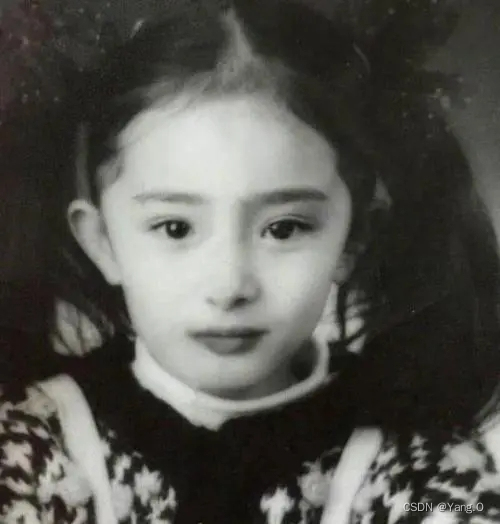一、引用
Microsoft.ML.OnnxRuntime
OpenCvSharp
OpenCvSharp.Extensions
二、人脸检测(Face Detection)
using System;
using System.Collections.Generic;
using System.Linq;
using Microsoft.ML.OnnxRuntime;
using Microsoft.ML.OnnxRuntime.Tensors;
using OpenCvSharp;
namespace FaceRecognition
{
class SCRFD
{
private readonly int[] feat_stride_fpn = new int[] { 8, 16, 32 };
private readonly float nms_threshold = 0.4f;
private Dictionary<string, List<Point>> anchor_centers;
private InferenceSession _onnxSession;
private readonly string input_name;
private readonly int[] input_dimensions;
public SCRFD(string model_path, SessionOptions options)
{
anchor_centers = new Dictionary<string, List<Point>>();
_onnxSession = new InferenceSession(model_path, options);
IReadOnlyDictionary<string, NodeMetadata> _onnx_inputs = _onnxSession.InputMetadata;
input_name = _onnx_inputs.Keys.ToList()[0];
input_dimensions = _onnx_inputs.Values.ToList()[0].Dimensions;
}
public List<PredictionBox> Detect(Mat image, float dete_threshold = 0.5f)
{
int iWidth = image.Width;
int iHeight = image.Height;
int height = input_dimensions[2];
int width = input_dimensions[3];
float rate = width / (float)height;
float iRate = iWidth / (float)iHeight;
if (rate > iRate)
{
iWidth = (int)(height * iRate);
iHeight = height;
}
else
{
iWidth = width;
iHeight = (int)(width / iRate);
}
float resize_Rate = image.Size().Height / (float)iHeight;
Tensor<float> input_tensor = new DenseTensor<float>(new[] { input_dimensions[0], input_dimensions[1], height, width });
OpenCvSharp.Mat dst = new Mat();
Cv2.Resize(image, dst, new OpenCvSharp.Size(iWidth, iHeight));
for (int y = 0; y < height; y++)
for (int x = 0; x < width; x++)
if (y < dst.Height && x < dst.Width)
{
Vec3b color = dst.Get<Vec3b>(y, x);
input_tensor[0, 0, y, x] = (color.Item2 - 127.5f) / 128f;
input_tensor[0, 1, y, x] = (color.Item1 - 127.5f) / 128f;
input_tensor[0, 2, y, x] = (color.Item0 - 127.5f) / 128f;
}
else
{
input_tensor[0, 0, y, x] = (0 - 127.5f) / 128f;
input_tensor[0, 1, y, x] = (0 - 127.5f) / 128f;
input_tensor[0, 2, y, x] = (0 - 127.5f) / 128f;
}
var container = new List<NamedOnnxValue>();
//将 input_tensor 放入一个输入参数的容器,并指定名称
container.Add(NamedOnnxValue.CreateFromTensor(input_name, input_tensor));
//运行 Inference 并获取结果
IDisposableReadOnlyCollection<DisposableNamedOnnxValue> results = _onnxSession.Run(container);
var resultsArray = results.ToArray();
List<PredictionBox> preds = new List<PredictionBox>();
for (int idx = 0; idx < feat_stride_fpn.Length; idx++)
{
int stride = feat_stride_fpn[idx];
DisposableNamedOnnxValue scores_nov = resultsArray[idx];
Tensor<float> scores_tensor = (Tensor<float>)scores_nov.Value;
Tensor<float> bboxs_tensor = (Tensor<float>)resultsArray[idx + 3 * 1].Value;
Tensor<float> kpss_tensor = (Tensor<float>)resultsArray[idx + 3 * 2].Value;
int sHeight = height / stride, sWidth = width / stride;
for (int i = 0; i < scores_tensor.Dimensions[1]; i++)
{
float score = scores_tensor[0, i, 0];
if (score <= dete_threshold)
continue;
string key_anchor_center = String.Format("{0}-{1}-{2}", sHeight, sWidth, stride);
List<Point> anchor_center = null;
try
{
anchor_center = anchor_centers[key_anchor_center];
}
catch (KeyNotFoundException)
{
anchor_center = new List<Point>();
for (int h = 0; h < sHeight; h++)
for (int w = 0; w < sWidth; w++)
{
anchor_center.Add(new Point(w * stride, h * stride));
anchor_center.Add(new Point(w * stride, h * stride));
}
anchor_centers.Add(key_anchor_center, anchor_center);
}
float[] box = new float[bboxs_tensor.Dimensions[2]];
for (int b = 0; b < bboxs_tensor.Dimensions[2]; b++)
box[b] = bboxs_tensor[0, i, b] * stride;
float[] kps = new float[kpss_tensor.Dimensions[2]];
for (int k = 0; k < kpss_tensor.Dimensions[2]; k++)
kps[k] = kpss_tensor[0, i, k] * stride;
box = Distance2Box(box, anchor_center[i], resize_Rate);
kps = Distance2Point(kps, anchor_center[i], resize_Rate);
preds.Add(new PredictionBox(score, box[0], box[1], box[2], box[3], kps));
}
}
if (preds.Count == 0)
return preds;
preds = preds.OrderByDescending(a => a.Score).ToList();
return NMS(preds, nms_threshold);
}
public static List<PredictionBox> NMS(List<PredictionBox> predictions, float nms_threshold)
{
List<PredictionBox> final_predications = new List<PredictionBox>();
while (predictions.Count > 0)
{
PredictionBox pb = predictions[0];
predictions.RemoveAt(0);
final_predications.Add(pb);
int idx = 0;
while (idx < predictions.Count)
{
if (ComputeIOU(pb, predictions[idx]) > nms_threshold)
predictions.RemoveAt(idx);
else
idx++;
}
}
return final_predications;
}
private static float ComputeIOU(PredictionBox PB1, PredictionBox PB2)
{
float ay1 = PB1.BoxTop;
float ax1 = PB1.BoxLeft;
float ay2 = PB1.BoxBottom;
float ax2 = PB1.BoxRight;
float by1 = PB2.BoxTop;
float bx1 = PB2.BoxLeft;
float by2 = PB2.BoxBottom;
float bx2 = PB2.BoxRight;
float x_left = Math.Max(ax1, bx1);
float y_top = Math.Max(ay1, by1);
float x_right = Math.Min(ax2, bx2);
float y_bottom = Math.Min(ay2, by2);
if (x_right < x_left || y_bottom < y_top)
return 0;
float intersection_area = (x_right - x_left) * (y_bottom - y_top);
float bb1_area = (ax2 - ax1) * (ay2 - ay1);
float bb2_area = (bx2 - bx1) * (by2 - by1);
float iou = intersection_area / (bb1_area + bb2_area - intersection_area);
return iou;
}
private static float[] Distance2Box(float[] distance, Point anchor_center, float rate)
{
distance[0] = -distance[0];
distance[1] = -distance[1];
return Distance2Point(distance, anchor_center, rate);
}
private static float[] Distance2Point(float[] distance, Point anchor_center, float rate)
{
for (int i = 0; i < distance.Length; i = i + 2)
{
distance[i] = (anchor_center.X + distance[i]) * rate;
distance[i + 1] = (anchor_center.Y + distance[i + 1]) * rate;
}
return distance;
}
}
class PredictionBox
{
private readonly float score;
private readonly float boxLeft;
private readonly float boxRight;
private readonly float boxBottom;
private readonly float boxTop;
private readonly float[] landmark;
public PredictionBox(float score, float boxLeft, float boxTop, float boxRight, float boxBottom, float[] landmark)
{
this.score = score;
this.boxLeft = boxLeft;
this.boxRight = boxRight;
this.boxBottom = boxBottom;
this.boxTop = boxTop;
this.landmark = landmark;
}
public float Score => score;
public float BoxLeft => boxLeft;
public float BoxRight => boxRight;
public float BoxBottom => boxBottom;
public float BoxTop => boxTop;
public float[] Landmark => landmark;
}
}
三、人脸对齐(Face Alignment)
using OpenCvSharp;
namespace FaceRecognition
{
class FaceAlign
{
static public Mat Align(Mat image, float[] landmarks, int width, int height)
{
//标准脸的关键点
float[,] std = { { 38.2946f, 51.6963f }, { 73.5318f, 51.5014f }, { 56.0252f, 71.7366f }, { 41.5493f, 92.3655f }, { 70.7299f, 92.2041f } };
Mat S = new Mat(5, 2, MatType.CV_32FC1, std);
Mat Q = Mat.Zeros(10, 4, MatType.CV_32FC1);
Mat S1 = S.Reshape(0, 10);
for (int i = 0; i < 5; i++)
{
Q.At<float>(i * 2 + 0, 0) = landmarks[i * 2];
Q.At<float>(i * 2 + 0, 1) = landmarks[i * 2 + 1];
Q.At<float>(i * 2 + 0, 2) = 1;
Q.At<float>(i * 2 + 0, 3) = 0;
Q.At<float>(i * 2 + 1, 0) = landmarks[i * 2 + 1];
Q.At<float>(i * 2 + 1, 1) = -landmarks[i * 2];
Q.At<float>(i * 2 + 1, 2) = 0;
Q.At<float>(i * 2 + 1, 3) = 1;
}
Mat MM = (Q.T() * Q).Inv() * Q.T() * S1;
Mat M= new Mat(2, 3, MatType.CV_32FC1, new float[,]{ { MM.At<float>(0,0), MM.At<float>(1, 0), MM.At<float>(2, 0) }, { -MM.At<float>(1, 0), MM.At<float>(0, 0), MM.At<float>(3, 0) } });
OpenCvSharp.Mat dst = new Mat();
Cv2.WarpAffine(image, dst, M, new OpenCvSharp.Size(width, height));
return dst;
}
}
}
四、特征提取(Feature Extraction)
using System;
using System.Collections.Generic;
using System.Linq;
using Microsoft.ML.OnnxRuntime;
using Microsoft.ML.OnnxRuntime.Tensors;
using OpenCvSharp;
namespace FaceRecognition
{
class ArcFace
{
private InferenceSession _onnxSession;
private readonly string input_name;
private readonly int[] input_dimensions;
public ArcFace(string model_path, SessionOptions options)
{
_onnxSession = new InferenceSession(model_path, options);
IReadOnlyDictionary<string, NodeMetadata> _onnx_inputs = _onnxSession.InputMetadata;
input_name = _onnx_inputs.Keys.ToList()[0];
input_dimensions = _onnx_inputs.Values.ToList()[0].Dimensions;
}
public float[] Extract(Mat image, float[] landmarks)
{
image = FaceAlign.Align(image, landmarks, 112, 112);
Tensor<float> input_tensor = new DenseTensor<float>(new[] { 1, input_dimensions[1], input_dimensions[2], input_dimensions[3] });
for (int y = 0; y < image.Height; y++)
{
for (int x = 0; x < image.Width; x++)
{
Vec3b color = image.Get<Vec3b>(y, x);
input_tensor[0, 0, y, x] = (color.Item2 - 127.5f) / 127.5f;
input_tensor[0, 1, y, x] = (color.Item1 - 127.5f) / 127.5f;
input_tensor[0, 2, y, x] = (color.Item0 - 127.5f) / 127.5f;
}
}
var container = new List<NamedOnnxValue>();
//将 input_tensor 放入一个输入参数的容器,并指定名称
container.Add(NamedOnnxValue.CreateFromTensor(input_name, input_tensor));
//运行 Inference 并获取结果
IDisposableReadOnlyCollection<DisposableNamedOnnxValue> results = _onnxSession.Run(container);
var resultsArray = results.ToArray();
DisposableNamedOnnxValue nov = resultsArray[0];
Tensor<float> tensor = (Tensor<float>)nov.Value;
float[] embedding = new float[tensor.Length];
double l2 = 0;
for (int i = 0; i < tensor.Length; i++)
{
embedding[i] = tensor[0, i];
l2 = l2 + Math.Pow((double)tensor[0, i], 2);
}
l2 = Math.Sqrt(l2);
for (int i = 0; i < embedding.Length; i++)
embedding[i] = embedding[i] / (float)l2;
return embedding;
}
}
}
五、人脸识别(Face Recognition)
using System;
using System.Collections.Generic;
using System.IO;
using Microsoft.ML.OnnxRuntime;
using OpenCvSharp;
namespace FaceRecognition
{
class FaceRecognize
{
private SCRFD detector;
private ArcFace recognizer;
private readonly float reco_threshold;
private readonly float dete_threshold;
private Dictionary<string, float[]> faces_embedding;
public FaceRecognize(string dete_model, string reco_model, int ctx_id= 0,float dete_threshold= 0.50f, float reco_threshold= 1.24f)
{
SessionOptions options = new SessionOptions();
options.LogSeverityLevel = OrtLoggingLevel.ORT_LOGGING_LEVEL_INFO;
if (ctx_id >= 0)
options.AppendExecutionProvider_DML(ctx_id); //使用directml进行加速时调用
else
options.AppendExecutionProvider_CPU(0); //使用cpu进行运算时调用
detector = new SCRFD(dete_model, options);
recognizer = new ArcFace(reco_model, options);
faces_embedding = new Dictionary<string, float[]>();
this.reco_threshold = reco_threshold;
this.dete_threshold = dete_threshold;
}
public void LoadFaces(string face_db_path)
{
if (!Directory.Exists(face_db_path))
Directory.CreateDirectory(face_db_path);
foreach(string fileName in Directory.GetFiles(face_db_path))
{
Mat image = Cv2.ImRead(fileName);
Register(image, System.IO.Path.GetFileNameWithoutExtension(fileName));
}
}
public int Register(Mat image, string user_id)
{
List<PredictionBox> pbs =detector.Detect(image, dete_threshold);
if (pbs.Count == 0)
return 1;
if (pbs.Count > 1)
return 2;
float[] embedding = recognizer.Extract(image, pbs[0].Landmark);
foreach(float[] face in faces_embedding.Values)
if (Compare(embedding, face) < reco_threshold)
return 3;
faces_embedding.Add(user_id, embedding);
return 0;
}
public Dictionary<string, PredictionBox> Recognize(System.Drawing.Bitmap bitmap)
{
Mat image = OpenCvSharp.Extensions.BitmapConverter.ToMat(bitmap);
Dictionary<string, PredictionBox> results = new Dictionary<string, PredictionBox>();
List<PredictionBox> pbs = detector.Detect(image, dete_threshold);
foreach (PredictionBox pb in pbs)
{
float[] embedding = recognizer.Extract(image, pb.Landmark);
foreach(string user_id in faces_embedding.Keys)
{
float[] face = faces_embedding[user_id];
if (Compare(embedding, face) < reco_threshold)
results.Add(user_id, pb);
}
}
return results;
}
static public double Compare(float[] faceA,float[] faceB)
{
double result = 0;
for(int i=0;i<faceA.Length;i++)
result = result + Math.Pow(faceA[i] - faceB[i], 2);
return result;
}
}
}
六、示例
using System.Collections.Generic;
using System.Drawing;
namespace FaceRecognition
{
static class Program
{
static void Main()
{
string dete_model = @"X:\xxx\scrfd_10g_bnkps_shape640x640.onnx";
string reco_model = @"X:\xxx\w600k_r50.onnx";
string face_db_path = @"X:\xxx\face_db";
FaceRecognize face_reco = new FaceRecognize(dete_model, reco_model, -1);
face_reco.LoadFaces(face_db_path);
string image_name = @"X:\xxx\test.jpg";
System.Drawing.Bitmap bitmap = new System.Drawing.Bitmap(image_name);
Dictionary<string, PredictionBox> results = face_reco.Recognize(bitmap);
Graphics draw = Graphics.FromImage(bitmap);
foreach (string user_id in results.Keys)
{
PredictionBox pb = results[user_id];
float w = 2f;//边框的宽度
using (Graphics g = Graphics.FromImage(bitmap))
{
using (Pen pen = new Pen(System.Drawing.Color.Red, 1f))
{
g.DrawString(user_id, new Font("Arial", 10), new SolidBrush(System.Drawing.Color.Blue), (int)pb.BoxLeft, (int)(pb.BoxTop - 16));
}
using (Pen pen = new Pen(System.Drawing.Color.Red, w))
{
g.DrawRectangle(pen, new System.Drawing.Rectangle((int)pb.BoxLeft, (int)pb.BoxTop, (int)(pb.BoxRight - pb.BoxLeft), (int)(pb.BoxBottom - pb.BoxTop)));
}
using (Pen pen = new Pen(System.Drawing.Color.Tomato, 2f))
{
for (int i = 0; i < pb.Landmark.Length; i = i + 2)
g.DrawEllipse(pen, new System.Drawing.Rectangle((int)pb.Landmark[i] - 1, (int)pb.Landmark[i + 1] - 1, 2, 2));
}
g.Dispose();
}
}
draw.Dispose();
bitmap.Save(@"X:\xxx\result.bmp");
bitmap.Dispose();
}
}
}
七、思考
本文使用的SCRFD/ArcFace模型是insightface项目官方训练的模型。初始时,在SCRFD.Detect中的图片Resize处理使用的是SixLabors.ImageSharp的Resize方法,在人脸对齐中计算关键点位置后使用SixLabors.ImageSharp处理图片(具体代码如下)。
using SixLabors.ImageSharp;
using SixLabors.ImageSharp.PixelFormats;
using SixLabors.ImageSharp.Processing;
namespace FaceRecognition
{
class SCRFD
{
private static Image<Rgb24> Resize(Image<Rgb24> image, SixLabors.ImageSharp.Size size)
{
image.Mutate(x => x
.AutoOrient()
.Resize(new ResizeOptions
{
Mode = ResizeMode.BoxPad,
Position = AnchorPositionMode.TopLeft,
Size = size
})
.BackgroundColor(Color.Black));
return image;
}
}
}
using SixLabors.ImageSharp;
using SixLabors.ImageSharp.PixelFormats;
using SixLabors.ImageSharp.Processing;
namespace FaceRecognition
{
class FaceAlign
{
static public Image<Rgb24> Align(Image<Rgb24> image, float[] landmarks, int width, int height)
{
float dy = landmarks[3] - landmarks[1], dx = landmarks[2] - landmarks[0];
double angle = Math.Atan2(dy, dx) * 180f / Math.PI;
float[] eye_center = new float[] { (landmarks[0] + landmarks[2]) / 2, (landmarks[1] + landmarks[3]) / 2 };
float[] lip_center = new float[] { (landmarks[6] + landmarks[8]) / 2, (landmarks[7] + landmarks[9]) / 2 };
float dis = (float)Math.Sqrt(Math.Pow(eye_center[0] - lip_center[0], 2) + Math.Pow(eye_center[1] - lip_center[1], 2)) / 0.35f;
int bottom = (int)Math.Round(dis * 0.65, MidpointRounding.AwayFromZero);
int top = (int)Math.Round(dis - bottom, MidpointRounding.AwayFromZero);
int left = (int)Math.Round(width * dis / height / 2, MidpointRounding.AwayFromZero);
int[] center = new int[] { (int)Math.Round(eye_center[0], MidpointRounding.AwayFromZero), (int)Math.Round(eye_center[1], MidpointRounding.AwayFromZero) };
int x1 = Math.Max(center[0] - 2 * bottom, 0), y1 = Math.Max(center[1] - 2 * bottom, 0);
int x2 = Math.Min(center[0] + 2 * bottom, image.Width - 1), y2 = Math.Min(center[1] + 2 * bottom, image.Height - 1);
image.Mutate(img => img.Crop(new Rectangle(x1, y1, x2 - x1 + 1, y2 - y1 + 1)));
int i_size = 4 * bottom + 1;
var newImage = new Image<Rgb24>(i_size, i_size, backgroundColor: Color.White);
newImage.Mutate(img =>
{
img.DrawImage(image, location: new SixLabors.ImageSharp.Point(2 * bottom - (center[0] - x1), 2 * bottom - (center[1] - y1)), opacity: 1);
img.Rotate((float)(0 - angle));
img.Crop(new Rectangle(newImage.Width / 2 - left, newImage.Height / 2 - top, left * 2, top + bottom));
img.Resize(width, height);
});
return newImage;
}
}
}
这样提取出来人脸特征的比对结果没有insightface原官方Python版的效果好,表现如同一个人的两张不同图片FaceRecognize.Compare值较大,虽然Compare值差异不大且大多数情况下不影响人脸识别结果。如下图两张图片:


之后做了改进(如代码):把图片Resize改用OpenCvSharp处理,人脸对齐算法与原版一致。改进后的比对结果就和原版的相差无几。
造成比对结果差异的原因可能是:原版用OpenCv处理图片,而初始是使用SixLabors.ImageSharp处理图片,两种处理方法导致模型输入数据的差异,进而导致提取特征的差异,所以原版训练出来的模型与使用OpenCv处理图片更适合。
说明:








 该文介绍了一个使用OpenCvSharp和Microsoft.ML.OnnxRuntime库实现的人脸识别系统,包括人脸检测(SCRFD)、人脸对齐(FaceAlignment)、特征提取(ArcFace)和人脸识别(FaceRecognition)四个主要步骤。系统首先通过SCRFD模型进行人脸检测,然后使用FaceAlignment对人脸进行对齐,接着利用ArcFace模型提取特征,最后通过比较特征来进行人脸识别。文章还讨论了不同图像处理库(如SixLabors.ImageSharp和OpenCvSharp)对识别效果的影响。
该文介绍了一个使用OpenCvSharp和Microsoft.ML.OnnxRuntime库实现的人脸识别系统,包括人脸检测(SCRFD)、人脸对齐(FaceAlignment)、特征提取(ArcFace)和人脸识别(FaceRecognition)四个主要步骤。系统首先通过SCRFD模型进行人脸检测,然后使用FaceAlignment对人脸进行对齐,接着利用ArcFace模型提取特征,最后通过比较特征来进行人脸识别。文章还讨论了不同图像处理库(如SixLabors.ImageSharp和OpenCvSharp)对识别效果的影响。
















 942
942

 被折叠的 条评论
为什么被折叠?
被折叠的 条评论
为什么被折叠?








